Download Your Offervault Affiliate Marketing Report Here
Today we’re going to talk to you about CPA Affiliate Marketing and OfferVault. What kind of offers to look for, what kind of offers work, what is OfferVault, what is CPA marketing, how you can get paid, and more.
I’ve been doing affiliate marketing and CPA marketing for about 20 years now. Which means for the last twenty years, I have been making millions of dollars from the comfort of my own home promoting CPA Affiliate offers and regular affiliate offers, and some of my own offers as well.
We’re going to break it down for you and show you exactly what it takes to make a living in this industry.
What is OfferVault?
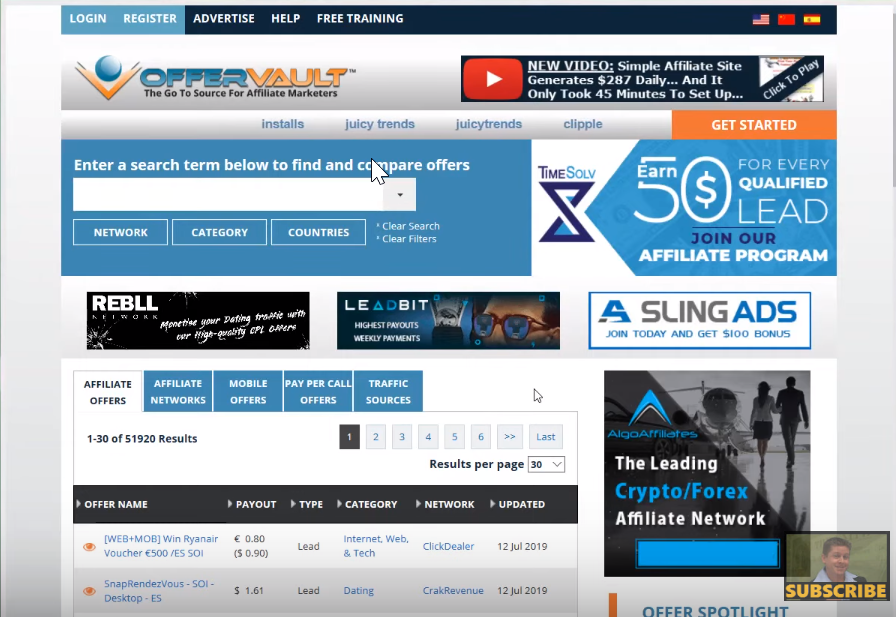
OfferVault is a site where you can search for affiliate offers. A lot of you guys have been on OfferVault.
OfferVault is not an affiliate network. So, you don’t there to sign up to promote offers. You go there to sign up to get all their cool training, to get all their cool stuff, and most importantly, to find offers.
It’s important to differentiate that.
Sometimes you’ll see offers up here in blue. These ones are usually sponsored, and they may or may not be relevant to what you’re looking for.
It’s sort of like the difference between a commercial and TV show, only it’s a little more relevant.
OfferVault does a great job of categorizing offers. When we see an offer, we can see the category its in, and we can see the network it comes from. This is very important, because the network is where you go to actually run the offer. You can’t do anything with the offer until you visit the network.
So if you see an offer you want to promote, you just click on the link. It will bring up a summary of the offer and the network.

When you go to the network, you need to create your account and get your link. That’s where your paycheck is going to come from.
OfferVault will also show you what type of payout the offer has. It might be a sale, a lead, or something else.
On the site, you see the category of the offer, then you see the date (the last time the offer was updated), then trending searches. You’ll also see some other ads as well (including my own beautiful ads).
This is a rundown of what OfferVault is. Remember, OfferVault is not where you get the offers. You need to sign up at the CPA network to get the offers.
So you would want to look at what the stipulations are that the affiliate network has, and what they’re looking for.
One of the downsides to OfferVault is that it doesn’t show a lot of direct offers. If you want to see more offers, you could use Google, or you could also use my toolbar, the Affiliate Marketing Dude Toolbar. This helps you as well, by helping you search for affiliate offers, and you can get it at www.AffiliateMarketingDude.com.

It sits up here like this, and it has a dropdown menu and a power search. You could type your keyword into the power search bar, and it will automatically take what you search for and put it in OfferVault. It’ll also go through and search affiliate programs on one of the sites that we have as an aggregator.
It’ll also go through and search for ClickBank affiliate offers related to your keyword, resell rights products, Google Trends, and other things like that.
In addition, it gives you a member login, news stuff, and some tools on how to start affiliate marketing.
So that’s some really good stuff, and it’s something you can download for free.
What is a CPA Affiliate Network?
A CPA Affiliate Network is a place that has lots of offers.
You might find networks on OfferVault, but the networks don’t really use OfferVault. They’re on there, just like other websites might be on a search engine, such as Google.
You might think that the first thing you would need to do is to sign up for a bunch of networks. But you shouldn’t do that. Instead, you should only sign up for the network, or networks, that have the offer you want.
If you go to a network, and you tell them a specific offer you want to run, they’ll be much more likely to accept you than if you just say that you want to make money online. It’s a different kind of dialogue.
These networks want to know that you not a scammer, or spammer, or something shady.
They want to know that you’re on the up and up, because if their advertisers get pissed off, they’re not going to be a network anymore. So they have to protect themselves and make sure that you’re doing legit stuff.
Some examples of CPA Affiliate Networks are Terra Leads, MaxWeb, Max Bounty, and eLocal.
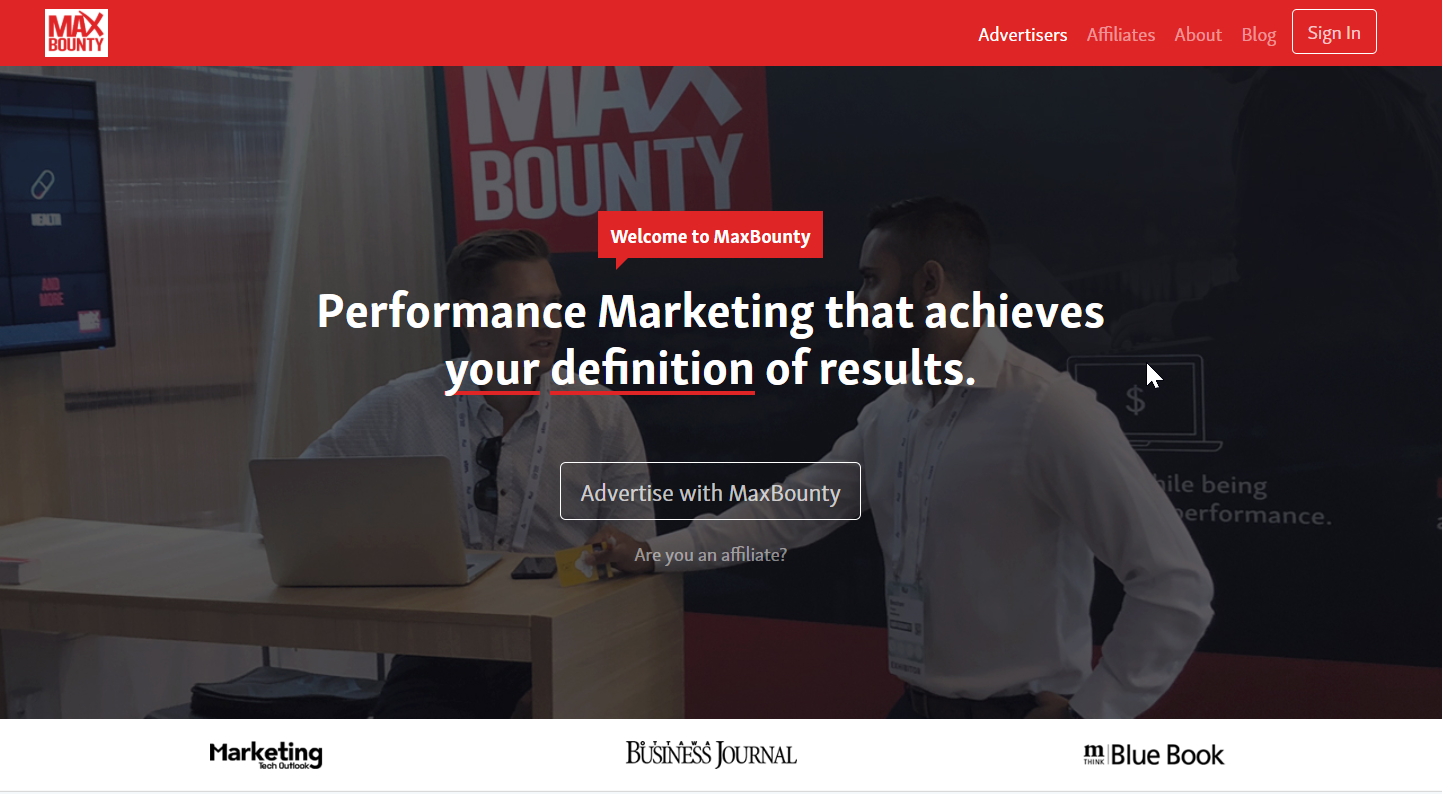
These networks have thousands of offers, and they have tracking software that generates a custom link for you to promote your offer when someone cost the required action. (CPA stands for cost-per-action).
The offers could range anywhere from dating, to weight loss, to toolbars, freebies, giveaways, downloads, and much more. And all these offers are from all different places.
These networks also make sure that you get paid through their own company, with one payment. So at the end of the day, whether you run one offer or 1,000 offers, whether you make a dollar or $500,000, your payment is going to come from the affiliate network.
Affiliate offers could pay be check, by wire, by PayPal, or some other method. I usually prefer to get paid by wire, but others might not. You might get paid multiple times a month, or monthly, or something else—that also depends on the particular network.
Now, how does the CPA network get paid?
What they do is they take a little bit off the top, usually anywhere from 5% to 10% depending on the offer. And you want to remember that you can negotiate your price.
So for example, if you go through and you’re making $3 per download, and you’re getting 1,000 downloads per day, you could ask them for $4 or 5$ per download.
Usually when I do this, I’m successful. I make the affiliate networks fight each other by telling them that one network is offering me more than another network. That’s something you can do as well.
So, this is how it works. You go to OfferVault to find the offers, and then you join the affiliate network. The affiliate network is going to do all the tracking, and they’re going to give you the links you need.
If you try to promote an offer from an affiliate program directly, you’ll find that it’s a lot more work to accomplish. Usually you have to go to an offer’s website, find their affiliates section, get find affiliate links, and even sign up for each individual offer that you want. And you may even have to do more than that.
You might be asking, “Won’t I make more money going direct, and cutting out the middleman?”
Not necessarily, because the networks have bulk rates, so they have better leveraging power with their suppliers. Since they manage so many affiliates, they can ask for more money per offer that’s promoted.
So you have to think about that. Usually the benefit of going to a CPA network far outweighs not using a CPA network.
Make sure you get a legit affiliate network, because sometimes they are shady and don’t actually pay you. MaxBounty and GlobalWide are good ones. Any that have been around a long time are usually good ones.
The next question is how many networks you should join. You should only join the network that has the offer you want.
How Do Affiliate Marketers Get Paid?

Affiliate marketers get paid a few different ways. These can be by going direct, or by going through a CPA network.
When you choose offers (whether from OfferVault or directly from affiliate networks), make sure you understand the payout type and what action is needed for you to get paid. If it’s a lead, it could be a short-form or a long-form lead.
A short form lead is usually only one field or so. They’re often email submits, where someone simply has to enter in their email.
They could also be long-form leads, which will be bigger offers that will require more up front of the customer. Certain offers like mortgages, credit cards, and loan applications are often ones that have a big, long form. These are naturally going to pay more than just collecting an email address.
Other types of payouts are pay-per-click, downloads, pay-per-sale, pay-per-trial, pay-per-impression, and pay-per-call.
Pay-per-call is a huge, huge market. These people will actually pay you just for a phone call. You get a custom phone number, which is like an affiliate link, and you can put it on your site. When people call the number, the company tracks it to see if people stay on for a certain amount of time. If they reach a set point, you get paid.
Here is a “moving assistance” offer where the payout type is pay-per-call. If someone calls and stays on the phone for 90 to 120 seconds, you get $48.

If you were interested in promoting this offer, you could perhaps find keywords for people looking up “moving checklist”, or “how to pack before moving”. And on and on we go.
When you’re promoting offers in different networks, such as Max Bounty, there will be certain types of traffic that the offers will allow.
Each offer will have a little traffic icon on the side, and if you select it, you can see which traffic is allowed.
Traffic Types
Let’s talk about these traffic types and what they mean.
There are several different traffic types, such as banners, contextual, display, email, search, social, web, direct-to-offer, mobile, incentivized, and native.
Banners are pretty simple. I can put a banner on my site, or put a banner on other sites. I could also buy banners on other sites.
Contextual is a lot like banners, but usually it’s for big networks. Just as there are affiliate networks, there are also traffic networks. I can go to Google and buy context ads on a bunch of websites. That would be contextual advertising.
With email traffic, it’s very important to know that the networks are talking about a direct-to-offer email. That means you would send your list an email that takes them directly to the offer.
This is a method you might want to take. For me, what I do is send an email that goes to my own site, blog, or landing page, and then I pitch the offer. Trust me, you should do this.

The reason is because if you do an email directly to the offer, you have to make what’s called a suppression list. This means that you need to run an email database against your database, and make sure that the people who opted out of that offer don’t continue to get your email. This is a pain in the ass.
If you do this other method here, then you’re not emailing people the offer. You’re emailing people a link to your blog for content, which will get more traffic, which will get more people to like you, which will boost up your site traffic and your search ranking. This is very important.
Search is very important. These are search ads, where you people could go to Google, type in something like “pest control” as an example, and you could send them directly to an offer.
A lot of offers don’t allow direct search or paid ads. So what do you do in those cases?
You do the same kind of thing as with email traffic. So you would have a search ad, and it would link to your blog site or landing page. Then on that site, you would pitch the offer.
Now I like to intercept all of this and build a mailing list.
What this will do is get you a better-quality score, allow you to have good content, and make you not look like a shady affiliate. There are lots of benefits to having a mailing list.
Social is direct from Facebook, or direct from Instagram, or direct from some other social media channel.
Web is basically everything we talked about here. Search, email, social, you have all of these on a website, so that’s why it’s web traffic.
You want to avoid getting traffic from direct-to-offer. So many affiliates do it this way, and they don’t have any disclaimers, and they’re making a few dollars when they could be making a lot more. And they’re breaking a lot of rules, which can get them into trouble.
If you don’t have a disclaimer that you’re an affiliate, and you just think you’re cute spamming Facebook like a lot of people do, you’re liable for it.
When you have a social post, for example, you don’t have to put an ad on a social platform and send people directly to the offer. You can give people a link to your blog or site. You’ll have some good content on your site, and then you’ll send them to the offer.
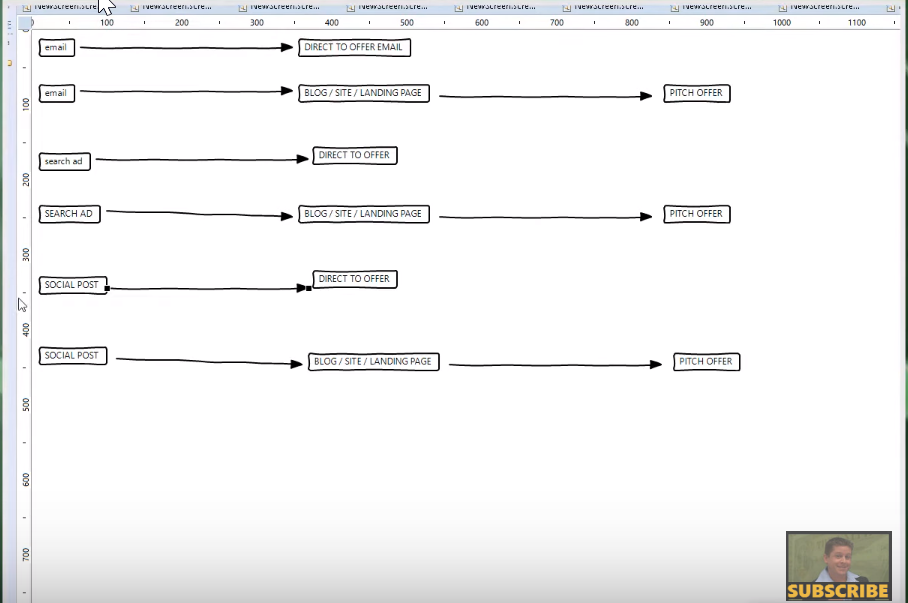
At the end of the day, always bridge the gap.
Why? Because you have control of your message, you can build a mailing list, then you don’t have to deal with all the stipulations of going direct.
Trying to take all the shortcuts end up being the long way. And It ends up being a lot harder. People will spend all day trying to save a minute.
Mobile traffic is quite simply going for a mobile audience.
When you bid on your ads, such as pay-per-click ads, you could specify if you want mobile or if you don’t want mobile. It’s very important that you look at the offer and make sure you see that little mobile phone icon that shows mobile traffic is allowed.
A lot of times if you run an offer, and it doesn’t have that phone icon and they don’t accept mobile traffic, they won’t even pay you if you get a mobile lead.
Next, we’re talking about incentivized traffic. This is when you as an affiliate give people incentives to sign up for something. For example, if you were promoting a pay-per-call offer for a rehab facility, you might tell customers that if they stay on the line for two minutes, you’ll give them $100. That would be an incentive.
Now, a lot of places don’t allow that, because obviously, that’s not a good quality lead. So, try to stay away from incentive stuff.
That’s not to say you can’t do bonuses and things like that, but you just want to be careful. I usually just provide the value on my website.
Last is native traffic. This is pretty much like contextual, where you have ads that look like content that’s natural to the site.
Landing Pages, Sites, and Direct Linking
Here are some different ways you can promote offers.
The first type is going direct. This is if you want to just promote a link directly. If you buy an ad on a search engine, you link people directly to the offer you’re promoting.
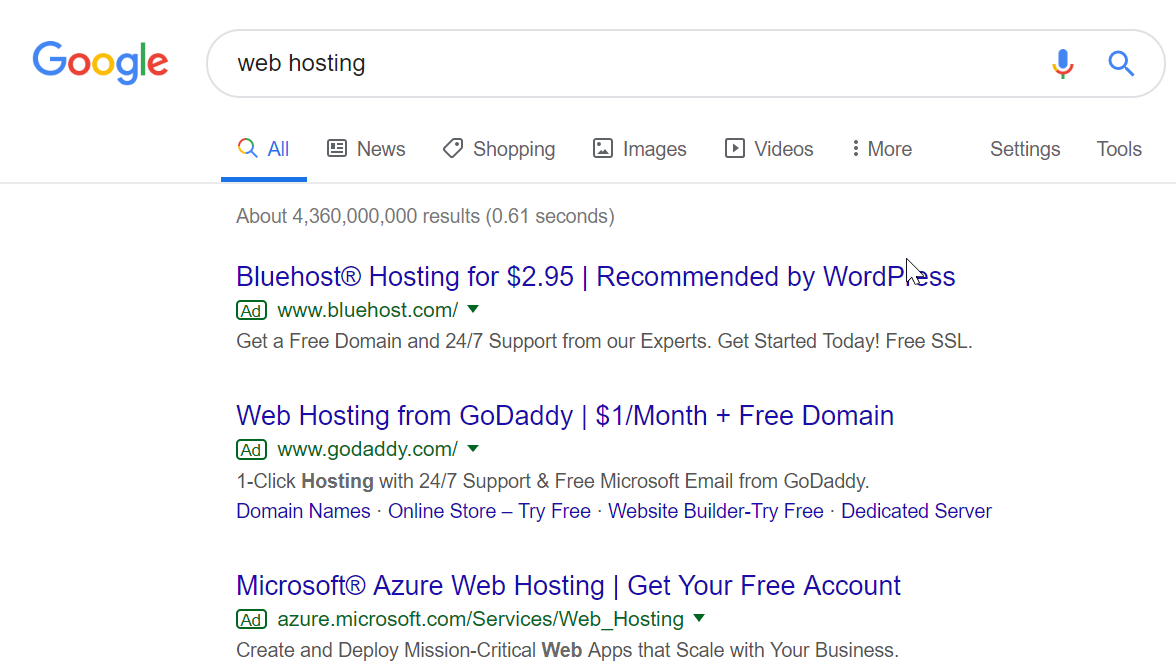
We touched on this a little bit before, when we talked about going direct to the offer versus having your blog or site. You should always send people to a site. Sometimes you can make money with a raw link, but it’s kind of risky. If you’re buying ads to that raw link, you have no control. You’re just hoping it converts, plain and simple.
If you have you own site, you have a lot more control. I know a lot of the top affiliates for these programs, and they do way better using their website or blog. They’re top affiliates because they have a website or blog with their offers.
The next is using major affiliate networks. There are several ways to promote offers using major affiliate networks. The first way is direct linking. This is if you go to an affiliate network, like Max Bounty, and you find an offer you want to promote. You would get a tracking link, and then you would put the raw link somewhere, such as on a social platform, and stick it right in my ad.
In my opinion, this is the stupidest way to do affiliate marketing.
The second way is cloaking links. This is a lot like direct linking, but it’s cloaking. To cloak a link, you take your link and run it through a link cloaker, and it makes your link shorter and easier to digest. But you would still take people directly to an offer, so it’s basically the same thing as direct linking.
You should always cloak your affiliate link, but you don’t want to do a cloak to a direct link.
The third way is to use what’s called a bridge page or a splash page. This is where you create a simple 1-3 page website, and the website’s whole idea is just to get people to your offer. You don’t really create a lot of new content, you’re just making a page that’s designed to get people to go to the offers.
You’d put your cloaked links on these sites, and they would just function as a little sales pitch for the offer.
The fourth way to use major affiliate networks is to create a blog or content site. This is where you’re actually creating content. The key here is that you want to actually create your blog or content around a market, not an offer.
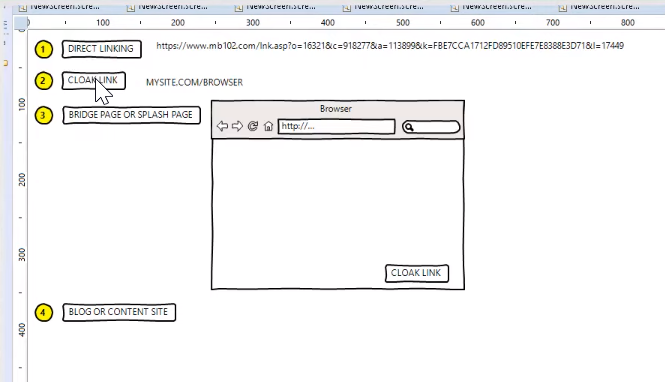
So you could create a site about weight loss, not a specific keto weight loss offer. You could even create a website about keto diets if you want, but it still wouldn’t be based around a specific offer.
A lot of people try to do this offer-centered, and then you’re at the mercy of the offer. If the offer goes away, you’re out of luck. So, do it about a market, not an offer, and that way you’re building your stuff.
I like to use blogs or content sites. It’s really easy to do, and you can pair it with email marketing, and all kinds of other stuff as well.
Link Types and Creating Your Links
Now, let’s talk about link types.
A raw link, as we went through before, is just the link itself. It’s usually very long and ugly.

A cloaked link is basically a raw link, but it’s “cloaked”, or made to look a lot prettier.
A banner link is when you actually get the entire code for a banner. With this, you choose your banner, and this whole code will put a banner on your site. It will also be a tracking link.
A text link is a word or string of words that still has the code for your tracking link.
A search link is a raw link for search, but again, you don’t want to go direct.
A dynamic link is one where you can send people to a specific page, like a specific search result. You can even pre-populate a field if you want the page to automatically have something on it, such as their email address for example. Or you can get the page to automatically know the person’s location, or whatever it may be.
A contextual link is just another type of raw link, a native type of link.
When you are getting your links from major affiliate networks, you have an option to put a sub ID. This is a way to track your links even more specifically. Let’s say you’re running Google ads and Facebook ads, and they are all promoting the same offer, so you have the same affiliate link for it.
The sub ID will track your links from each source, so you’ll be able to know how much traffic is coming from Google, and how much is coming from Facebook.
Marcus’s Favorite Offer Types
Next are my favorite offers.
Browser extensions are probably my all-time favorite offers. When promoting browser extensions, you want to make sure they’re on the up-and-up, and not weird ones. Usually you can get somewhere from $1.50 to $3 per download, which is where you want to be. All you have to do is get people to download a browser extension, and you get paid. Pretty cool, right?
There can be a lot of junk extensions, so sometimes you’ve got to learn to navigate around them.
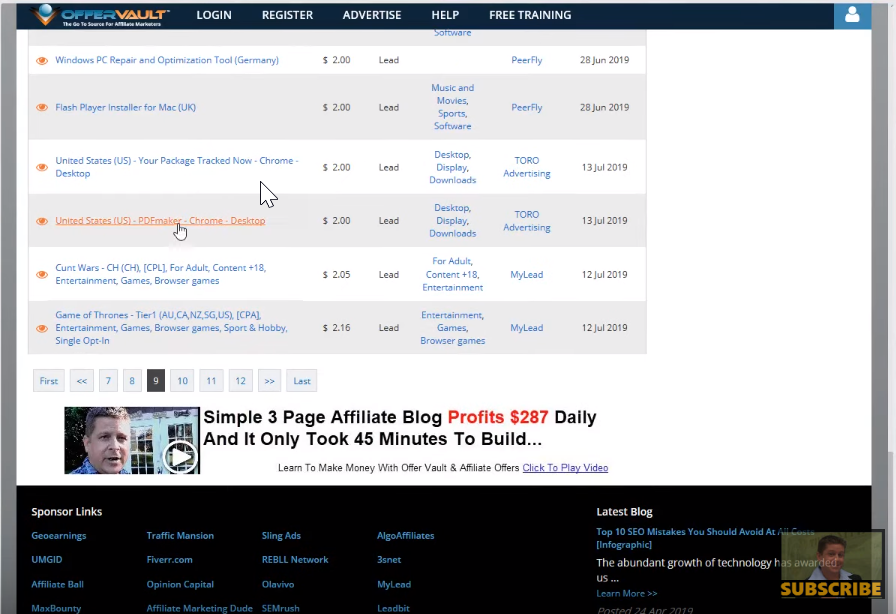
As-seen-on-TV are also some of my favorites. I like these because they pay a lot for a free trial or for a sale. For example, I could sell some onion cutter that’s $8, and I could get $20 for it. And that’s great, because I want to get paid as much as possible for the lowest barrier of entry.
Also, Fiverr offers are some of my favorites. I think Fiverr is awesome, because you could market offers for them under all the things Fiverr helps with, and they pay a good amount.
For example, in the storyboard product and animation services side, they pay $15 when someone gets a new Fiverr account. The person doesn’t even have to buy anything. They just get a new account and maybe bid on a job or something like that.
And some of them pay even more. This digital illustration offer pays $25, e-commerce services pay $45, and things like that. And these are not very hard to market.
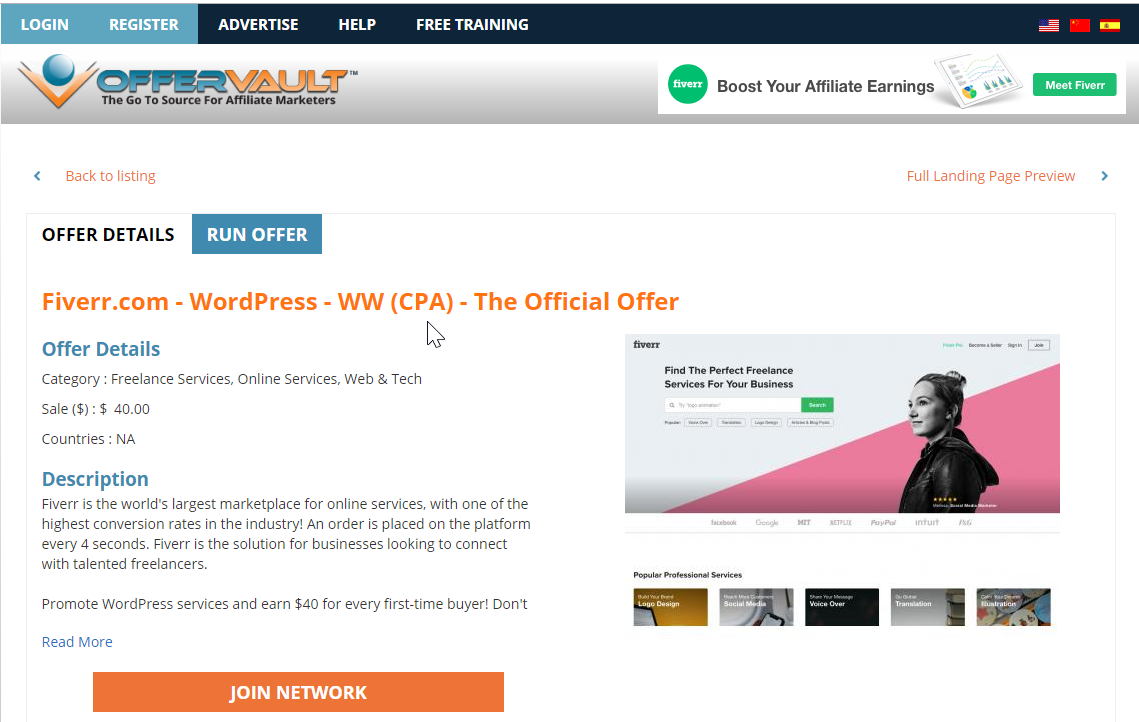
If you go through and get my course, you’ll learn how to find trigger words for these, and you can find your niche and do it directly.
Now, if you want me to find a niche in any of these offer types, go to www.HighTicketNiches.com, and just tell me which one you want. We’ll actually get you a domain name that’s worth money.
We’ll get you the niche market, we’ll find you the links, we’ll get you the offers, we’ll show you exactly how to run the whole thing. And if you’re struggling with affiliate marketing, I would highly recommend a high-ticket niche, because we basically hand you everything on a silver platter.
One of my other favorite types of offers is loans and credit cards.
Software-as-a-service is also really good. Now, software-as-a-service is something you would promote directly.
You could do something like ClickFunnels, or web hosting, or something like that, which is really cool.
Web hosting is another of my favorite offer types. I think we’re on track to do 5, close to 6 figures this year with web hosting. (I could do a lot more, I’ve just been super busy this year.)
Financing and investing is always good, and free credit scores are also good. You can literally get paid for having people get a free credit score.
Email and zip code offers, those are the ones like the one-field we showed earlier. Those are really easy and great. Diets, dating, high paying trials where you get paid for trials, all of those are offers I like to promote.
But this method, the stuff that I’m teaching you, is exactly what I’ve been doing for the last 19 years, and my interactive tools can show you all this.
So, if you want to learn CPA marketing from someone who’s been at this for two decades, who’s been in the trenches, who’s gone in there and done the stuff, I want to show you how my interactive tools show you all the ins and outs of how this works, so that you can get paid fast.
Because here’s the deal guys. Disclaimer: I don’t know how fast you’ll make money.
But, if you could get someone today to go through your link, to fill out a form, and get a free credit score, you could get paid $33, like, today.

(Now, it can take a while to get the money into your bank, obviously, but you know what I mean. You would make the money today.)
And if you 100 of them today, you would get $3,300 bucks today. Boom, there you go.
The Internet is a big place. A lot of people are looking for a lot of stuff.
This isn’t the run-of-the-mill junk. These are real secrets of how thousands of everyday people, just like you and me, are silently making fortunes using direct marketing, and searching, and advertising. And this could be you, too.

This is really powerful and I have learnt a lot from this write up…
But want to know why some of these network CPA request for payment before one can begin to run their offers
And secondly can someone join more than one CPA networks for offers?
Thank